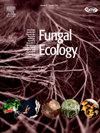土壤生态系统中细菌-真菌的相互作用:从生物防治和生态位分配到生物地球化学影响
IF 2.2
3区 环境科学与生态学
Q3 ECOLOGY
引用次数: 0
摘要
土壤生态系统是高度动态的环境,细菌和真菌之间复杂的相互作用显著影响生物地球化学过程、植物健康和生态系统稳定性。本文综述了目前对根际和块状土壤中细菌-真菌相互作用(BFIs)的理解,重点介绍了它们在生物防治、生态位分化和养分循环中的作用。我们讨论了驱动这些相互作用的分子机制,包括信号分子、胞外酶和次级代谢物,它们介导了细菌和真菌之间的竞争和合作关系。该综述还强调了生物流化床对碳、氮和磷循环的级联效应,强调了细菌和真菌在分解、矿化和养分动员过程中的独特功能作用。此外,我们探讨了环境干扰,如气候变化、农业实践和污染,对bfi的稳定性和功能的影响,强调了可持续管理战略的必要性。“组学”技术的应用,包括宏基因组学、亚转录组学和代谢组学,作为揭示生物基础设施的遗传、生理和代谢过程的有力工具进行了讨论。我们强调利用有益的生物基础设施促进可持续农业、生态系统恢复和生物技术应用的潜力。最后,我们确定了知识差距并提出了未来的研究方向,强调了整合新方法方法和扩展实验数据以开发微生物操作和可持续农业实践模型的重要性。本文章由计算机程序翻译,如有差异,请以英文原文为准。
Bacterial-fungal interactions in soil ecosystems: From biocontrol and niche partitioning to biogeochemical impacts
Soil ecosystems are highly dynamic environments where complex interactions between bacteria and fungi significantly influence biogeochemical processes, plant health, and ecosystem stability. This review provides a comprehensive overview of the current understanding of bacterial-fungal interactions (BFIs) in the rhizosphere and bulk soil, focusing on their roles in biocontrol, niche differentiation, and nutrient cycling. We discuss the molecular mechanisms driving these interactions, including signaling molecules, extracellular enzymes, and secondary metabolites, which mediate both competitive and cooperative relationships between bacteria and fungi. The review also highlights the cascading effects of BFIs on carbon, nitrogen, and phosphorus cycles, emphasizing the distinct functional roles of bacteria and fungi in decomposition, mineralization, and nutrient mobilization processes. Furthermore, we explore the impact of environmental disturbances, such as climate change, agricultural practices, and pollution, on the stability and functionality of BFIs, highlighting the need for sustainable management strategies. The application of "omics" technologies, including metagenomics, metatranscriptomics, and metabolomics, is discussed as a powerful tool for unraveling the genetic, physiological, and metabolic processes underpinning BFIs. We highlight the potential of harnessing beneficial BFIs for sustainable agriculture, ecosystem restoration, and biotechnological applications. Finally, we identify knowledge gaps and propose future research directions, emphasizing the importance of integrating novel methodological approaches and expanding experimental data to develop models for microbial manipulation and sustainable agricultural practices.
求助全文
通过发布文献求助,成功后即可免费获取论文全文。
去求助
来源期刊

Fungal Ecology
环境科学-生态学
CiteScore
5.80
自引率
3.40%
发文量
51
审稿时长
3 months
期刊介绍:
Fungal Ecology publishes investigations into all aspects of fungal ecology, including the following (not exclusive): population dynamics; adaptation; evolution; role in ecosystem functioning, nutrient cycling, decomposition, carbon allocation; ecophysiology; intra- and inter-specific mycelial interactions, fungus-plant (pathogens, mycorrhizas, lichens, endophytes), fungus-invertebrate and fungus-microbe interaction; genomics and (evolutionary) genetics; conservation and biodiversity; remote sensing; bioremediation and biodegradation; quantitative and computational aspects - modelling, indicators, complexity, informatics. The usual prerequisites for publication will be originality, clarity, and significance as relevant to a better understanding of the ecology of fungi.
 求助内容:
求助内容: 应助结果提醒方式:
应助结果提醒方式:


